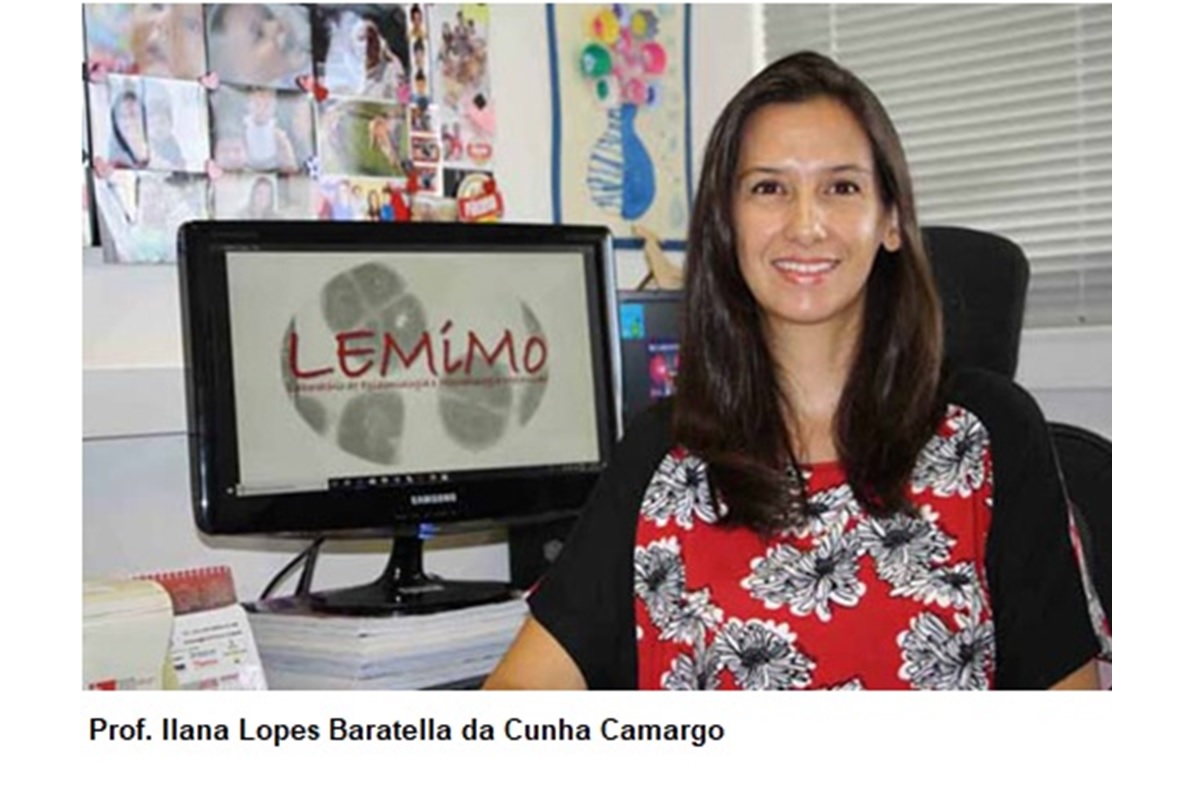By Assessoria de Comunicação – IFSC/USP
Between January and July 2015, there was an increase in the number of cases of Klebsiella pneumoniae resistant to carbapenem antibiotics (Ertapenem, Meropenem and Imipenem) in a Manaus hospital. These antibiotics are considered “last resort” and are used in hospitals when these bacteria are resistant to other primary access antibiotics. When these bacteria are resistant to carbapenems, few antibiotics remain as treatment alternatives, such as polymyxins, for example, and are thus called “Superbacteria”.
The research group led by Prof. Dr. Ilana L. B. C. Camargo, head of the IFSC-USP Laboratory for Epidemiology and Molecular Microbiology (LEMiMo), studied bacterial specimens from infections of hospitalized patients during this period to identify which resistance genes were involved in carbapenemic resistance. and to see if the increase in resistance observed in the hospital was due to the spread of some bacterial clone, or due to the sharing of a plasmid between bacteria (plasmids are mobile genetic elements that can be shared by different bacteria and transfer resistance or virulence genes from one bacterium to another).
A total of 40 samples of Klebsiella pneumoniae isolated and identified by the hospital during this period, regardless of whether they were carbapenemic resistant or not, were included in the study. Eight out of forty isolates were found to be carbapenemic resistant and considered multiresistant. Of these, two isolates were resistant to carbapenemics due to porin alterations, which are “protein channels” located on the bacterial cell wall through which antibiotics can pass to their interior and effect them. These changes are caused by random mutations that occur in the genes that encode these porins and can prevent / slow antibiotic entry into the bacterial cell, making it resistant to the antibiotic. Resistances caused by mutations can only spread among patients if the resistant bacterial clone can spread, because this resistance mechanism cannot be “shared” between different bacteria, it only propagates from mother to daughter cells when bacterial cells split up.
However, 6 isolates from this hospital contained the blaKPC gene encoding carbapenemase called Klebsiella penumoniae carbapenemase (KPC), an enzyme that degrades carbapenemic antibiotics and left many bacteria known as “KPC Superbacteria”. This gene is found in mobile genetic elements, usually in plasmid-borne transposons, which can be transmitted from one bacterium to another, whether or not of the same species, by a process known as conjugation. This type of spread of antibiotic resistance is more difficult to contain and resistance can spread more quickly if hospital staff are not aware of it.
In this study, the blaKPC gene was not found in the transposon Tn4401, which has been registered in Brazil as the main carrier of this resistance. When the mobile genetic element that carries the blaKPC gene is different from Tn4401, it is called a “non-Tn4401 element”, or NTEKPC. To identify the NTEKPC involved in this blaKPC gene dissemination, some bacterial samples had their genome sequenced, so the research group can identify some interesting features that suggest an explanation for the early spread of this gene in this hospital.
The blaKPC gene was found in a transposon very similar to type Ia NTEKPC found in China. The NTEKPC found in the Manaus samples contains the following genes in a type of plasmid (IncX5) that is not commonly involved in the spread of carbapenemic resistance: ∆ISKpn6 / blaKPC-2 / tnpA-ISKpn27 / tnpR-Tn3 / tnpA-ISEc63- like on a Tn1722-based transposon unit. The plasmid involved in the dissemination of carbapenemic resistance in this hospital was called pAMKP10.
Interestingly, it was observed that the first bacterial sample of this period studied to present pAMKP10 was not from Klebsiella pneumoniae, as previously identified by the methods used in the hospital, but rather from K. quasipneumoniae subsp. quasipneumoniae. It is important to note that it is not possible to distinguish between these two species by the classical methods of bacterial identification used in most clinical laboratories. LEMiMo can only be correctly identified through genome sequencing performed during this study. Until recently, it was believed that this species was found only in the environment and was rarely involved in a hospital environment or infection. Using Pulsed Field Gel Electrophoresis (PFGE) typing, all isolates identified as K. penumoniae from the period studied were compared with K. quasipneumoniae subsp. Quasipneumoniae (called AMKP9) and it was verified by genetic similarity that there was no dissemination of it within this period after its first isolation. AMKP9 was the first sample to present pAMKP10 and only after two months of this isolate did pAMKP10 be found in K. penumoniae samples – all identified as ST11, a strain with high dissemination capacity in the hospital environment and generally multiresistant. Thus, this clone spread to at least five patients in this hospital. This study suggests that there was transfer of plasmid pAMKP10 containing the resistance gene between K. quasipneumoniae subsp. quasipneumoniae and K. penumoniae, with subsequent clonal dissemination of the latter bacterial species.
This was a study that was part of the Doctorate of the student Rosineide Cardoso de Souza (student of the Graduate Program in Evolutionary Genetics and Molecular Biology at UFSCar) together with Andrei Nicoli G. Dabul (Postdoctoral student at IFSC-USP), Camila Boralli and Luíza Zuvanov, students of the IFSC-USP Graduate Program. The work was recently published in Plasmid magazine (Click HERE to see de article).
From now on, it is necessary to investigate the impact of this new genetic element by carrying the blaKPC gene in its dissemination, a project that is currently underway at LEMiMo.
Link to original article: https://www2.ifsc.usp.br/portal-ifsc/pesquisa-no-ifsc-usp-disseminacao-do-gene-blakpc-famoso-entre-as-superbacterias/





